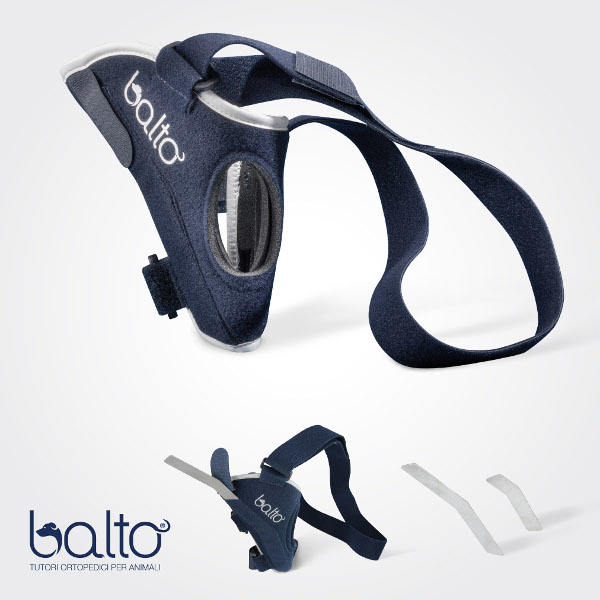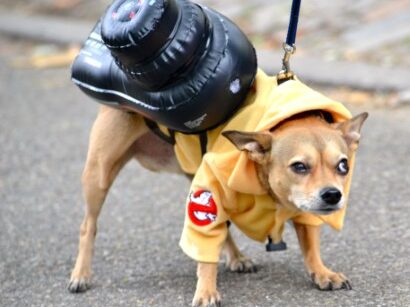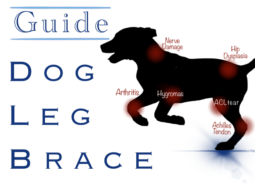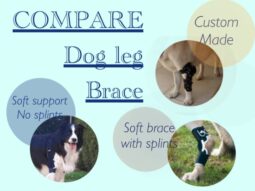A dog knee brace can be a pain. After dogs tear their cruciate ligament (ACL) or post cruciate surgery (TPLO, TTA, TTO ), they are in pain, lame, and not weight-bearing. You made the decision to use a dog leg support for their knee. Once you receive your brace and fit it, most of the time dogs get used to it in a few minutes to a couple of hours. They start walking with more confidence, allowing you to fine-tune the fitting of the dog leg brace and happily walk through the recovery period.
Sometimes for some dogs, it will take a few days to get used to it. The dog knee brace fitting goes well but your dog is not at ease. They may keep their leg up, look at you unwilling to walk, and wondering what they are supposed to do with this apparel on them.
Here are some tips to help them to adapt to the leg support
Dog knee brace fitting is uncomfortable - Is it Normal?
Dogs are not used to wear clothes, bandage, cast, or leg brace. Imagine you wearing a full moon boot and try to walk with it for the first time. Your gait wont be exactly as normal. It feels strange at first but you know it is needed for your recovery so you give it a go and try. It is the same for your dog. Your dog relies on your confidence to fit the brace and to encourage them to give it a go and walk with it without anxiety.
Try to avoid showing them your doubt about how to use the brace. Grab a lead and show them it is time to walk, then congratulate them for their first steps even if they are not perfect.
Comfort also depends on the type of dog leg brace. The rigidity of the knee brace is one of the variables. It makes it less comfortable than simple soft neoprene protection around the knee. However in the case of ACL injury with drawing sign, the stability of the knee joint requires strong rigid support.
Some knee braces like the BALTO have removable splints and adapt along with your pet's recovery. At first as rigidity is required for strong support and to stabilize the knee joint, the brace is used with 2 rigid splints laterally. After a few weeks or months recovering, the knee joint of your dog is stable at walk speed but not when jumping, trotting, or turning. At that stage, it is then possible to remove the rigid splints and to use the brace without them. This is the second phase of the recovery and lasts for another few months. It matches with a gradual increase in exercises to build up muscles and prevent relapse.

Time since the injury - Compensatory mechanisms with muscle spasms
When a dog has been lifting their leg up for days to months, it is not surprising to see them with muscle spasms, particularly on their back. Massaging this area 4-5 times a day for 5 minutes will help tremendously. Less sore means the back is less curved to ease the dog knee brace fitting. In addition, a dog with less muscle spasm will be less anxious about using their leg. They are more likely to put their leg down and use it.
Plenty of dog massage courses are available on You-Tube. Give it a go.
The anticipation of pain even with dog knee brace fitting correctly - Your dog does not trust their leg anymore
Sometimes, your dog is just anticipating pain, even long after their knee surgery or cruciate tear. They are not in pain but they are anxious about putting their leg down. To help them, it is useful to start with the problem gently, one step at the time. Like a baby learn to stand and gain stability before walking, it is a good idea with your dog to teach him to weight bear in confidence before walking again on 4 paws.
Fitt the dog knee brace then try the weight shift balance exercise with your dog. Rock the hindquarter sideways to shift the weight of the dog and teach the dog to trust his leg again. You can also just lift the good leg for a second to shift the weight of the most stubborn pet. Exercise for 2-3 minutes several times a day. After a few days, try to use a lead and encourage them to walk slowly
Bad habit - It is easier and faster for your dog to run lame on three legs
It is so much easier for your dog to keep up a normal speed on 3 good legs than making the effort to test slowly the fourth leg. For small breeds, it is even more true as a normal adult pace is still quite fast for their little legs. Dogs wants to keep up with you and with their activities.
The key is to control the walk with a short lead and do it very very very slowly. You need to guide them and force them to take the time to learn to test, trust and use their leg again.
If you are equipped, a great way is to place your dog in a slow treadmill (0.5 - 1km/h)
Unfortunately, treadmill for humans usually starts at 2-3km/h and for small breed it is a bit fast but better than nothing. It doesn't have to be an underwater treadmill, just the fact that the ground is moving underneath them rather than them to have to move, it initiates the walking motion and they usually finish the step… but it has to be very slow.
Once the dog understands that they can trust their leg again then the habit is broken and they progress very quickly.
So control of exercise with a lead is not forever but a very useful step and often an essential path for a peaceful recovery.
Still painful?
Of course, check with your vet to make sure your pet has a good pain management plan such, anti-inflammatory drugs and joint food supplements... (green lips mussels, glucosamine, chondroitin, and many others)
Class 4 laser therapy is also a great tool in veterinary rehabilitation. The photobiomodulation effect triggered by infrared light is painless and very efficient with modern class 4 therapeutic lasers. It helps reduce inflammation, control pain, and promote a speedy recovery.



